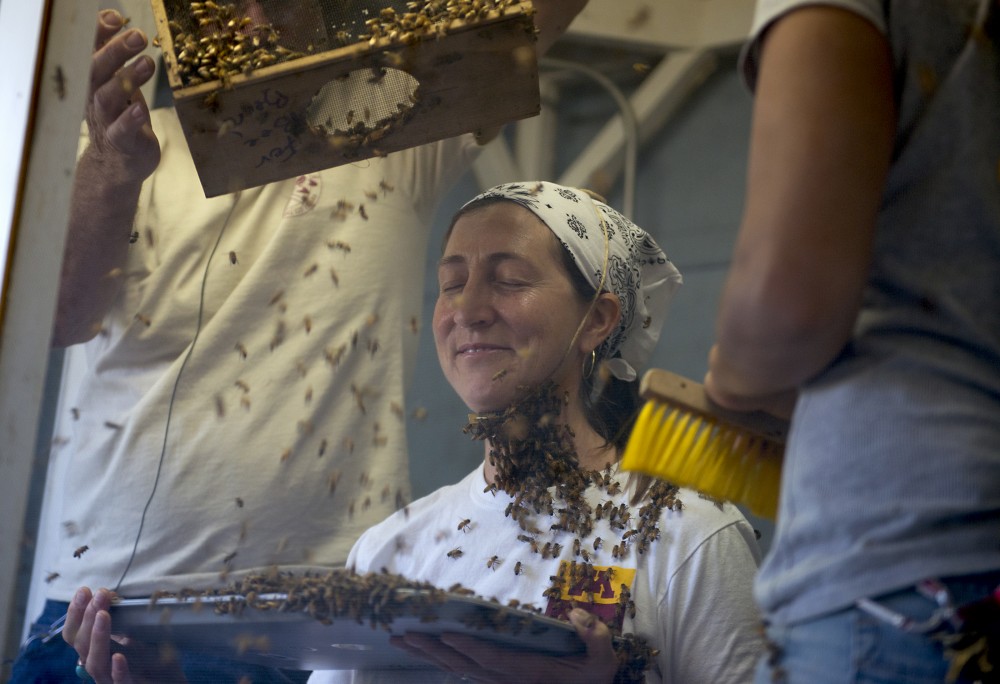A colony of 10,000 honeybees clung to the necks of beekeepers at the University of Minnesota Bee Squad’s “Bee Beard” show Minnesota State Fair Wednesday afternoon.
Debuted in 1999, this year’s event was geared toward spreading awareness about the endangered pollinators across Minnesota and the country.
On Wednesday, scientist Gary Reuter carried a honeybee hive to Bee Squad Members Ana Heck and Jenny Warner after placing a cage containing the queen bee around their necks, said Brooke Sommerfeldt, Squad beekeeper and a University of Wisconsin-Stout senior.
“Usually people think ‘Oh look, a bee. It stings you,’” said Andrew Urevig, University of Minnesota junior and Bee Squad beekeeper. “They don’t think about the other, gentler side of bees.”
This was the first year Urevig saw the event — where thousands of bees followed their queen to swarm the participants’ chins, he said.

This year’s show followed Gov. Mark Dayton’s Aug. 26 executive order for the state government to take action to restrict neonicotinoid pesticides in hopes of reversing the state’s dwindling bee population.
Dayton also called for a taskforce to study the risks pollinators face, increase enforcement on pesticide label requirements and ensure pesticides are only used when crops face an imminent threat.
Honeybee populations are valued at $17 billion, and in the cycle of food production native bees have an estimated worth of $6 billion, according to the executive order.
While some specialists say there is no definite number of bee species in Minnesota, evidence suggests populations are declining.
“We have specimens in the museums,” said Dr. Vera Krischik, University of Minnesota Department of Entomology associate professor. “We know the diversity of each species, but we don’t know the abundance of each species.”
The effect of toxic pesticides on social animals such as bees is complex, Krischik said.“I think what Gov. Mark Dayton was talking about in his memorandum was a request for a dialogue,” Krischik said. “There are enough scientific papers out there that say there could be problems.”
She said there is concern for bee populations due to chemicals that invade the pollen and nectar that “good” insects, such as bees and butterflies, eat.
“One of the issues with the decline in honeybees is them not having enough food,” Sommerfeldt said.
The Bee Squad worked on weeding areas organically in Osceola, Wisconsin, this summer, Sommerfeldt said. By weeding without herbicides the team avoids killing plants and damaging the area’s ecosystem.
Honeybees are not the only species in trouble. The Bee Lab currently marks bumblebees with non-toxic paint, allowing them to track the insect and bring awareness to their growing rarity.
“We don’t just work with honeybees,” Sommerfeldt said. “That’s just what grabs people’s attention.”








